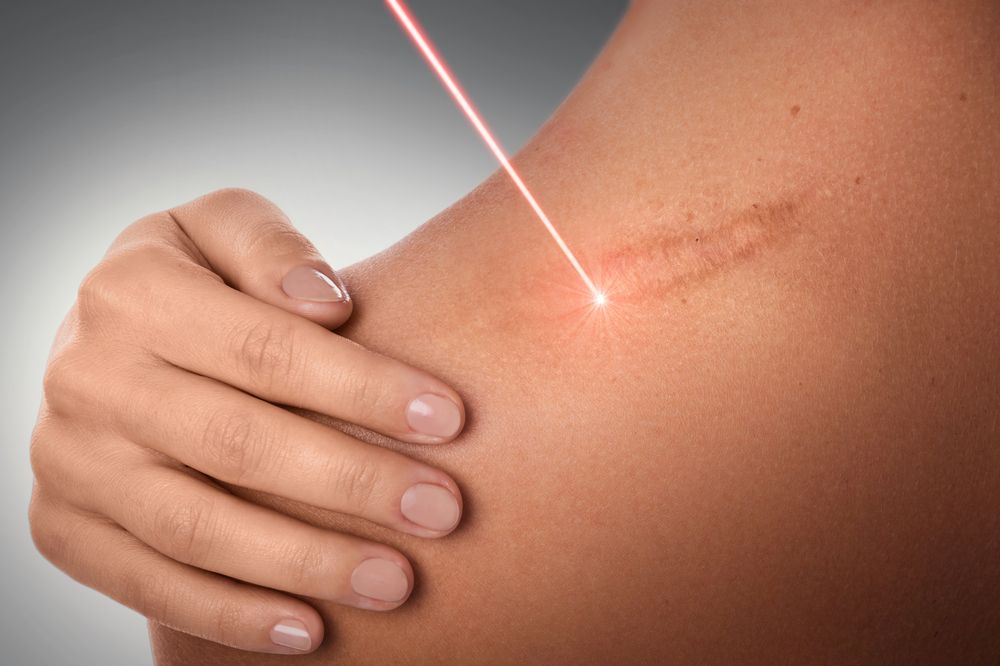- Case-Based Roundtable
- General Dermatology
- Eczema
- Chronic Hand Eczema
- Alopecia
- Aesthetics
- Vitiligo
- COVID-19
- Actinic Keratosis
- Precision Medicine and Biologics
- Rare Disease
- Wound Care
- Rosacea
- Psoriasis
- Psoriatic Arthritis
- Atopic Dermatitis
- Melasma
- NP and PA
- Skin Cancer
- Hidradenitis Suppurativa
- Drug Watch
- Pigmentary Disorders
- Acne
- Pediatric Dermatology
- Practice Management
- Prurigo Nodularis
- Buy-and-Bill
Article
Considerations for selecting laser technology
Author(s):
There are plenty of laser technologies for the practice, but then there are cornerstone lasers every practice should have. Learn more in this article from the Fall Clinical conference.
There are plenty of laser technologies for the practice, but then there are cornerstone lasers every practice should have. Learn more in this article from the Fall Clinical conference. (©BlackDay/Shutterstock.com)

LAS VEGASâA variety of energy-based devices on the market for both aesthetic and clinical indications meet the increasing demands of patients who seek minimally invasive methods to improve their health and beauty, according to a presentation at the 2018 Fall Clinical Dermatology Conference.
“Patients are looking to both look better and feel healthier,” said Mark Nestor, M.D., Ph.D., of the Center for Clinical and Cosmetic Research in Aventura, Florida. “Among the devices we as dermatologists have at our disposal are lasers, ultrasound, cyrotherapy, radio frequency, light-based systems and radiation devices.”
Dr. Nestor said it is important that dermatologists consider what particular devices fit into a specific practice and their capabilities. “It is great if you have a device that can address both clinical conditions and aesthetic conditions,” he said. Other considerations include the technology itself, consumables, the amount of space needed and cost.
Intense pulse light (IPL) is a cornerstone device in dermatology that has been available for more than 20 years. The flexible system can effectively treat rosacea, actinic damage, and cosmetically everything from hair removal to reversing signs of aging.
A recent study assessed a series of patients who mostly had one IPL treatment yearly over seven to 11 years for photorejuvenation. Independent evaluators of patient photos before and after revealed that patients actually looked overall two years younger upon completion of their once-a-year treatment compared to when they started.
A separate study looked at the gene expression in both younger and older sun-damaged patients treated with IPL on their forearm. “Before applying IPL, the investigators found that older people’s gene expression is different with sun damage compared to younger people’s gene expression,” Dr. Nestor said. “But after IPL, some of the gene expression in older patients is reversed, so that it more closely resembles the younger patients’ non-sun-damaged gene expression.”
Radio frequency devices can help immensely with aesthetics because of their versatility. For example, a small cannula for the Thermi device (an Almirall company) allows users to make a single tiny hole in the submental area and inject a small amount of lidocaine.
“A 15-minute treatment can reduce fat and tighten the skin under the skin, for instance,” Dr. Nestor said. “The device also does not take up a lot of space and the procedure is minimally invasive.”
Radio frequency devices in general do an excellent job topically in improving fine lines around the eyes and mouth, and even help cellulite and cellulite, without any pain and virtually any downtime, according to substantial data.
“And when you treat around the eyes for cosmetic benefits, one of the clinical benefits is that dry eye symptoms lessen significantly,” Dr. Nestor said. “RF is also one of the hallmarks of vaginal rejuvenation treatment.”
Low level laser therapy (LLLT), also known as photomodulation, is another exciting modality for aesthetics and clinical improvements. “This therapy uses very small levels of light, almost as a drug,” Dr. Nestor said. “Cosmetically, the therapy has been used for fat reduction.”
Numerous level 1 evidence studies conclude that LLLT can dramatically reduce fat. “But not by killing the fat cells, rather by changing their function and having them release fatty acids and triglycerides,” Dr. Nestor said.
Two other indications that benefit greatly from LLLT are diabetic peripheral neuropathy with pain and onychomycosis (nail fungus).
“Most topical drugs for onychomycosis are normally about 20 percent to 25 percent effective,” Dr. Nestor said. “And most heat lasers are not very efficacious.”
The combination Lunula laser (Erchonia) for LLLT has red and violet wavelengths. “The laser works very specifically for both killing the fungus and increasing the immune system,” Dr. Nestor said.
Published studies report up to over 80 percent effectiveness in clearing fungi in culture with the laser. “There are also no downtime and no pain,” Dr. Nestor said. “LLLT also has shown dramatic efficacy for neurologic conditions such as autism, so the future is bright.”
DISCLOSURES
Dr. Nestor is a consultant and has served on advisory boards of Sensus Healthcare, Almirall and Aerolase





